Sensor Validation and Diagnostic Potential of Smartwatches in Movement Disorders
Abstract
1. Introduction
- Sensor validation to measure the precision of smartwatches regarding acceleration amplitudes and tremor frequencies. As a gold standard, we conducted a comparison experiment utilizing a seismometer and a high-precision shaker. As a result, we assessed the level of precision regarding the smartwatches. This is particularly useful in the case of subtle tremors, which have acceleration amplitudes of < 0.05 g and are hard to capture by human vision.
- Timeseries features were extracted based on expert-based feature engineering and literature data. A broad range of machine learning models was trained and cross-validated to assess classification performances. To complement the expert-based feature engineering by a pure automatic feature extraction method, a deep-learning neural network with the raw time series data as input was trained and cross-validated as well.
2. Materials and Methods
2.1. Overview of Data Processing Steps
2.2. Study Data Generation
2.3. Smartwatch Sensor Validation
2.4. Machine Learning Pipeline and Features
- PD vs. healthy
- Movement disorders (PD + DD) vs. healthy
- PD vs. DD
3. Results
3.1. Smartwatch Sensor Validation
3.2. Classification Performances and Feature Importance
4. Discussion
Supplementary Materials
Author Contributions
Funding
Institutional Review Board Statement
Informed Consent Statement
Conflicts of Interest
References
- Mahmood, M.; Jalal, A.; Kim, K. WHITE STAG model: Wise human interaction tracking and estimation (WHITE) using spatio-temporal and angular-geometric (STAG) descriptors. Multimed. Tools Appl. 2019, 1–32. [Google Scholar] [CrossRef]
- Jalal, A.; Kim, K. Wearable inertial sensors for daily activity analysis based on adam optimization and the maximum entropy Markov model. Entropy 2020, 22, 579. [Google Scholar]
- Yaacob, N.I.; Tahir, N.M. Feature selection for gait recognition. In Proceedings of the 2012 IEEE Symposium on Humanities, Science and Engineering Research, Kuala Lumpur, Malaysia, 24–27 June 2012; pp. 379–383. [Google Scholar]
- Espay, A.J.; Bonato, P.; Nahab, F.B.; Maetzler, W.; Dean, J.M.; Klucken, J.; Eskofier, B.M.; Merola, A.; Horak, F.; Lang, a.e.; et al. Technology in Parkinson’s disease. Mov. Disord. Off. J. Mov. Disord. Soc. 2016, 31, 1272–1282. [Google Scholar] [CrossRef]
- Rocca, W.A. The burden of Parkinson’s disease. Lancet Neurol. 2018, 17, 928–929. [Google Scholar] [CrossRef]
- Postuma, R.B. Prodromal Parkinson disease. Nat. Rev. Neurol. 2019, 15, 437–438. [Google Scholar] [CrossRef]
- Varghese, J.; Niewöhner, S.; Fujarski, M.; Soto-Rey, I.; Schwake, A.-L.; Warnecke, T. Smartwatch-based Examination of Movement Disorders: Early Implementation and Measurement Accuracy. EGMS 2019. [Google Scholar] [CrossRef]
- Heldman, D.A.; Espay, A.J.; LeWitt, P.A.; Giuffrida, J.P. Clinician versus machine. Parkinsonism Relat. Disord. 2014, 20, 590–595. [Google Scholar] [CrossRef] [PubMed]
- Parkinson’s KinetiGraph (PKG). Dementech Neurosciences. Available online: https://dementech.com/parkinsons-kinetigraph-pkg/ (accessed on 21 April 2021).
- de Lima, A.L.S.; Hahn, T.; Evers, L.J.W.; Vries, N.M.; Cohen, E.; Afek, M. Feasibility of large-scale deployment of multiple wearable sensors in Parkinson’s disease. PLoS ONE 2017, 12, e0189161. [Google Scholar]
- Rusz, J.; Bonnet, C.; Klempíř, J.; Tykalová, T.; Baborová, E.; Novotný, M. Speech disorders reflect differing pathophysiology in Parkinson’s disease, progressive supranuclear palsy and multiple system atrophy. J. Neurol. 2015, 262, 992–1001. [Google Scholar] [CrossRef] [PubMed]
- Haq, A.U.; Li, J.P.; Memon, M.H.; Khan, J.; Malik, A.; Ahmad, T.; Ali, A.; Nazir, S.; Ahad, I.; Shahid, M. Feature Selection Based on L1-Norm Support Vector Machine and Effective Recognition System for Parkinson’s disease Using Voice Recordings. IEEE Access 2019, 7, 37718–37734. [Google Scholar] [CrossRef]
- Klucken, J.; Barth, J.; Maertens, K.; Eskofier, B.; Kugler, P.; Steidl, R.; Hornegger, J.; Winkler, J. Mobile biometrische Ganganalyse. Der. Nervenarzt. 2011, 82, 1604–1611. [Google Scholar] [CrossRef] [PubMed]
- Klucken, J.; Gladow, T.; Hilgert, J.G.; Stamminger, M.; Weigand, C.; Eskofier, B. “Wearables” in der Behandlung neurologischer Erkrankungen—wo stehen wir heute? Der. Nervenarzt. 2019, 90, 787–795. [Google Scholar] [CrossRef] [PubMed]
- Srulijes, K.; Mack, D.J.; Klenk, J.; Schwickert, L.; Ihlen, E.A.F.; Schwenk, M.; Lindemann, U.; Meyer, M.; Srijana, S.; Hobert, M.A.; et al. Association between vestibulo-ocular reflex suppression, balance, gait, and fall risk in ageing and neurodegenerative disease. BMC Neurol. 2015, 15, 1–11. [Google Scholar]
- Bandini, A.; Orlandi, S.; Escalante, H.J.; Giovannelli, F.; Cincotta, M.; Reyes-Garcia, C.A.; Vanni, P.; Zaccara, G.; Manfredi, C. Analysis of facial expressions in parkinson’s disease through video-based automatic methods. J. Neurosci. Methods 2017, 281, 7–20. [Google Scholar] [CrossRef]
- Parziale, A.; Senatore, R.; Della Cioppa, A.; Marcelli, A. Cartesian genetic programming for diagnosis of Parkinson disease through handwriting analysis: Performance vs. interpretability issues. Artif. Intell. Med. 2021, 111, 101984. [Google Scholar] [CrossRef] [PubMed]
- Varghese, J.; Niewöhner, S.; Soto-Rey, I.; Schipmann-Miletić, S.; Warneke, N.; Warnecke, T.; Dugas, M. A Smart Device System to Identify New Phenotypical Characteristics in Movement Disorders. Front. Neurol. 2019, 10, 48. [Google Scholar] [CrossRef]
- Non-Motor Symptoms Questionnaire (NMSQ) by the International Parkinson and Movement Disorder Society. Available online: https://www.movementdisorders.org/MDS/MDS-Rating-Scales/Non-Motor-Symptoms-Questionnaire.htm (accessed on 22 January 2021).
- Varghese, J.; Fujarski, M.; Hahn, T.; Dugas, M.; Warnecke, T. The Smart Device System for Movement Disorders: Preliminary Evaluation of Diagnostic Accuracy in a Prospective Study. Stud. Health Technol. Inform. 2020, 270, 889–893. [Google Scholar] [PubMed]
- Zhang, B.; Huang, F.; Liu, J.; Zhang, D. A Novel Posture for Better Differentiation Between Parkinson’s Tremor and Essential Tremor. Front. Neurosci. 2018, 12, 317. [Google Scholar] [CrossRef] [PubMed]
- Routine Data Processing in Earthquake Seismology. SpringerLink. Available online: https://link.springer.com/book/10.1007/978-90-481-8697-6 (accessed on 17 February 2021).
- Havskov, J.; Ottemöller, L.; Trnkoczy, A.; Bormann, P. Seismic Networks. In New Manual of Seismological Observatory Practice 2 (NMSOP-2); Deutsches GeoForschungsZentrum GFZ: Potsdam, Germany, 2012; pp. 1–65. [Google Scholar] [CrossRef]
- Nanometrics Trillium Compact Manual. Available online: https://www.nanometrics.ca/sites/default/files/2018-04/trillium_compact_data_sheet.pdf (accessed on 17 February 2021).
- Taurus Portable Seismograph User Guide. pp. 1–222. Available online: http://www.ipgp.fr/~arnaudl/NanoCD/software/Taurus_2.06.03/CD/doc/Taurus_UserGuide_15148R5.pdf (accessed on 29 April 2021).
- Havskov, J.; Alguacil, G. Instrumentation in Earthquake Seismology; Modern Approaches in Geophysics; Springer: Dordrecht, The Netherlands, 2004; Available online: https://www.springer.com/gp/book/9789401751131 (accessed on 26 February 2021).
- Bhatia, K.P.; Bain, P.; Bajaj, N.; Elble, R.J.; Hallett, M.; Louis, E.D.; Raethjen, J.; Stamelou, M.; Testa, C.M.; Deuschl, G.; et al. Consensus Statement on the classification of tremors. from the task force on tremor of the International Parkinson and Movement Disorder Society. Mov. Disord. 2018, 33, 75–87. [Google Scholar] [CrossRef]
- Helffrich, G.; Havskov, L. Routine Data Processing in Earthquake Seismology. Geol. Mag. 2011, 148, 507. [Google Scholar] [CrossRef]
- Dorogush, A.V.; Ershov, V.; Gulin, A. CatBoost: Gradient Boosting with Categorical Features Support. arXiv 2018, arXiv:1810.11363 [cs, stat]. 24 October 2018. Available online: http://arxiv.org/abs/1810.11363 (accessed on 9 March 2021).
- Deisenroth, M.P.; Faisal, A.A.; Ong, C.S. Mathematics for Machine Learning; Cambridge University Press: Cambridge, UK, 2020; 391p. [Google Scholar]
- Hackeling, G. Mastering Machine Learning with Scikit-Learn; Packt Publishing Ltd.: Birmingham, UK, 2017; 249p. [Google Scholar]
- Keras: The Python Deep Learning API. Available online: https://keras.io/ (accessed on 28 January 2021).
- Wang, Z.; Yan, W.; Oates, T. Time series classification from scratch with deep neural networks: A strong baseline. In Proceedings of the 2017 International Joint Conference on Neural Networks (IJCNN), Anchorage, AK, USA, 14–19 May 2017; pp. 1578–1585. [Google Scholar]
- Brodersen, K.H.; Ong, C.S.; Stephan, K.E.; Buhmann, J.M. The balanced accuracy and its posterior distribution. In Proceedings of the 2010 20th International Conference on Pattern Recognition, Istanbul, Turkey, 23–26 August 2010; pp. 3121–3124. [Google Scholar]
- Sklearn Metrics Balanced Accuracy Score—Scikit-Learn 0.24.1 Documentation. Available online: https://scikit-learn.org/stable/modules/generated/sklearn.metrics.balanced_accuracy_score.html (accessed on 8 March 2021).
- Neto, E.C.; Pratap, A.; Perumal, T.M.; Tummalacherla, M.; Bot, B.M.; Mangravite, L. Detecting confounding due to subject identification in clinical machine learning diagnostic applications: A permutation test approach. arXiv 2017, arXiv:1712.03120v1. [Google Scholar]
- Zham, P.; Arjunan, S.; Raghav, S.; Kumar, D.K. Efficacy of guided spiral drawing in the classification of Parkinson’s disease. IEEE J. Biomed. Health Inform. 2017, 22, 1648–1652. [Google Scholar] [CrossRef] [PubMed]
- Bhidayasiri, R.; Tarsy, D. Parkinson’s disease: Hoehn and Yahr Scale. In Movement Disorders: A Video Atlas: A Video Atlas; Current Clinical Neurology; Humana Press: Totowa, NJ, USA, 2012. [Google Scholar] [CrossRef]
- Varghese, J. Artificial Intelligence in Medicine: Chances and Challenges for Wide Clinical Adoption. Visc. Med. 2020, 36, 443–449. [Google Scholar] [CrossRef] [PubMed]
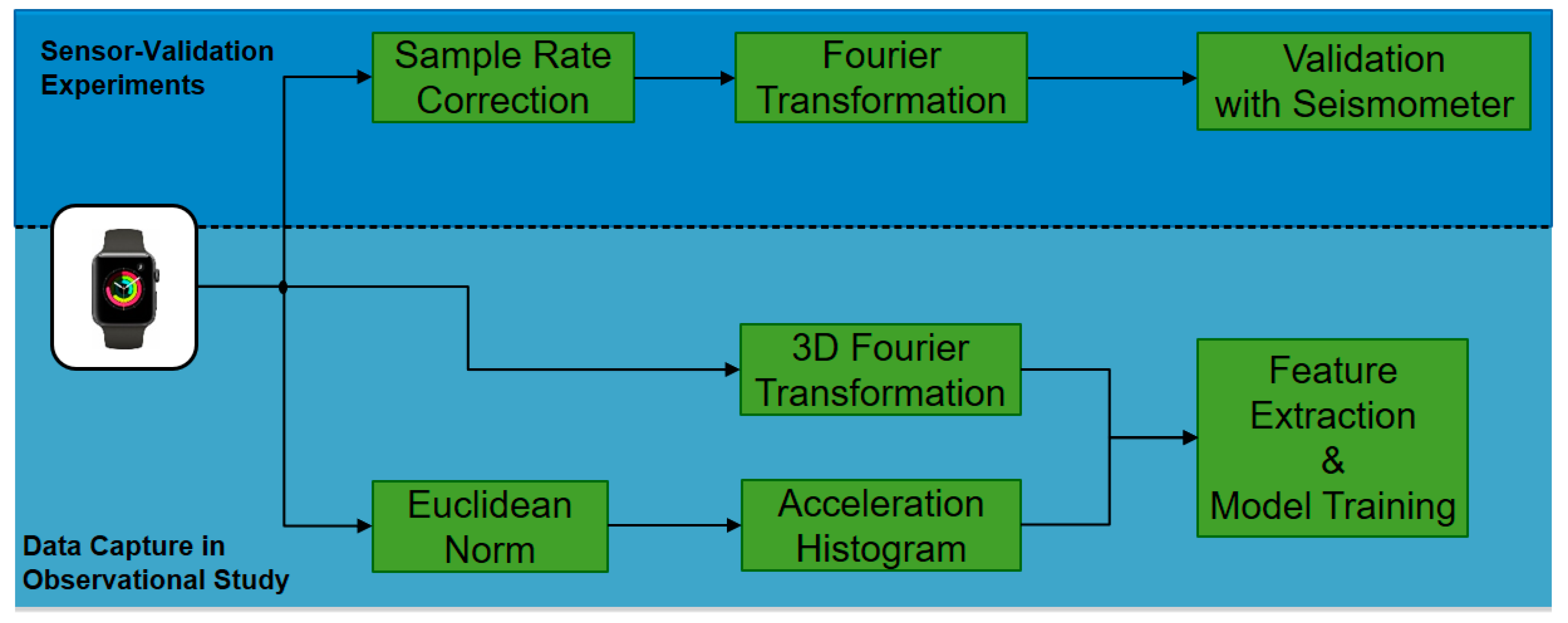
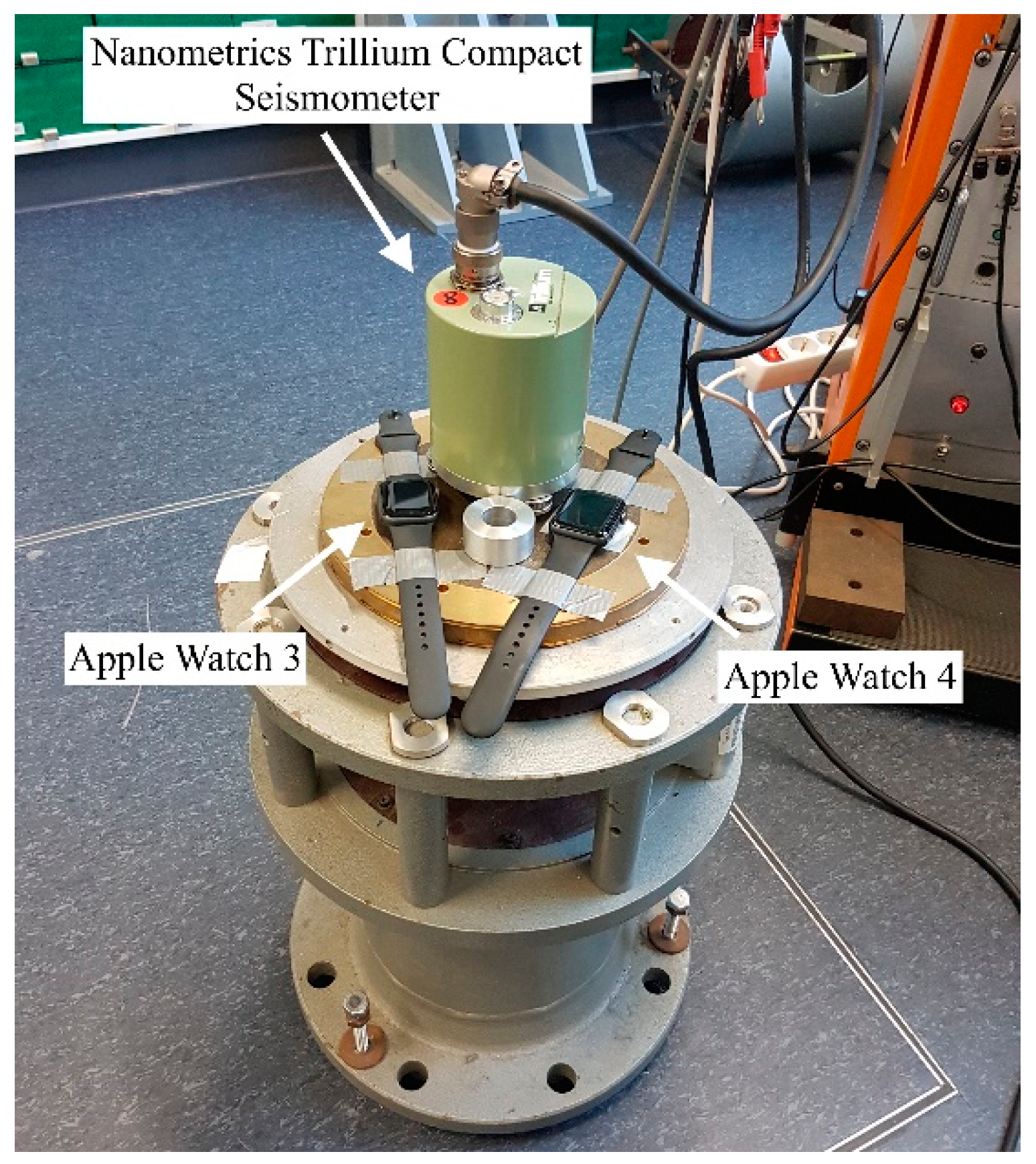
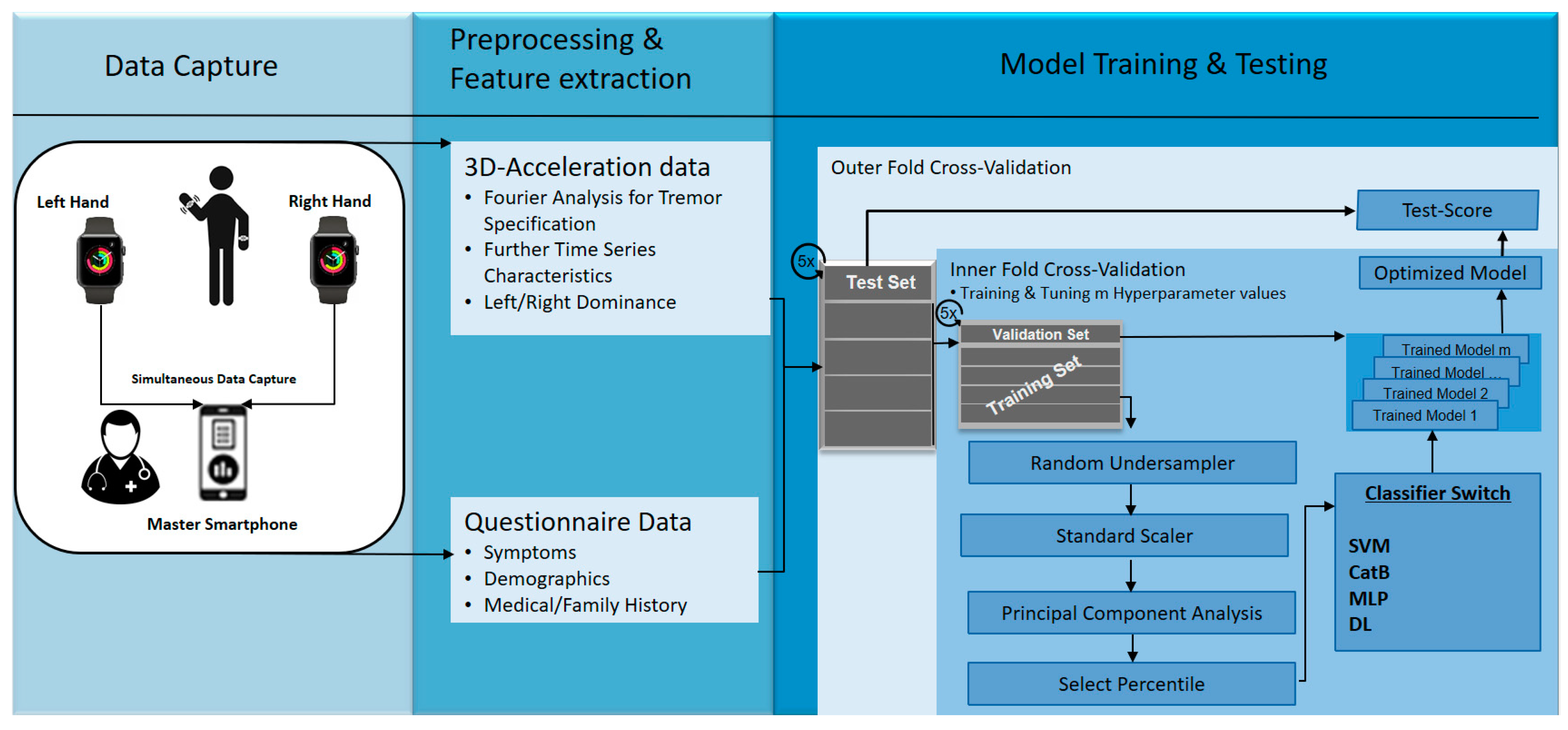
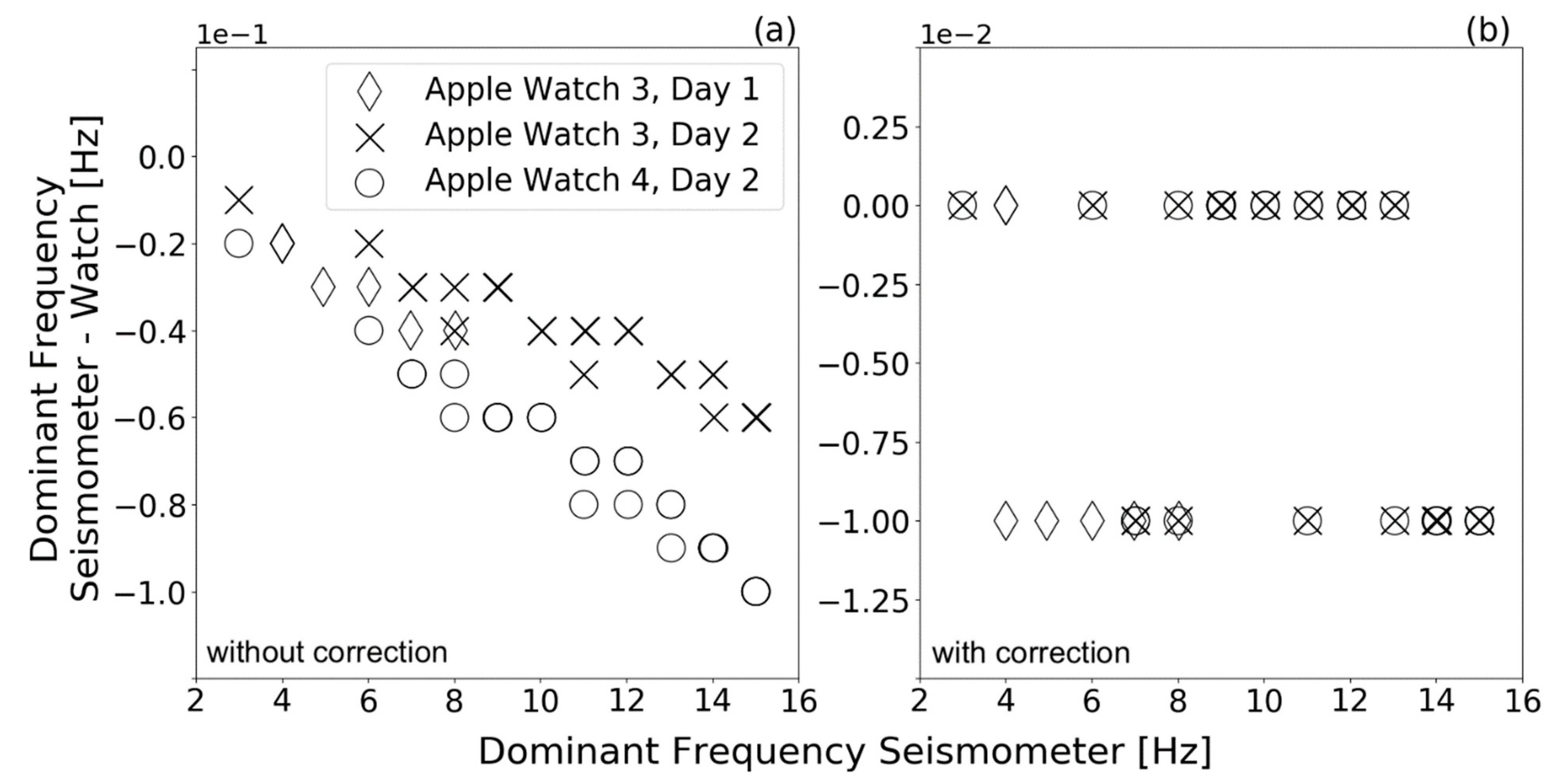
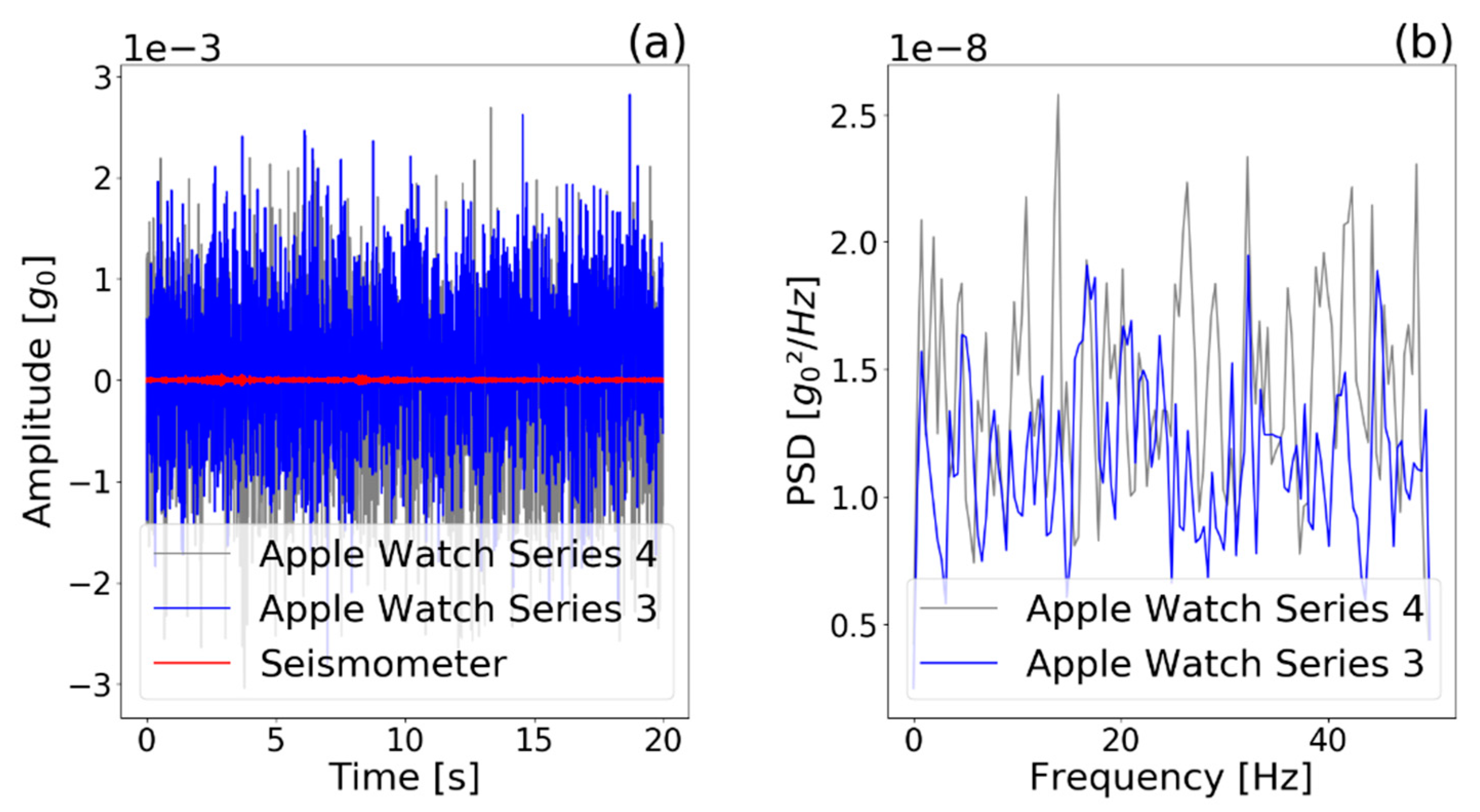

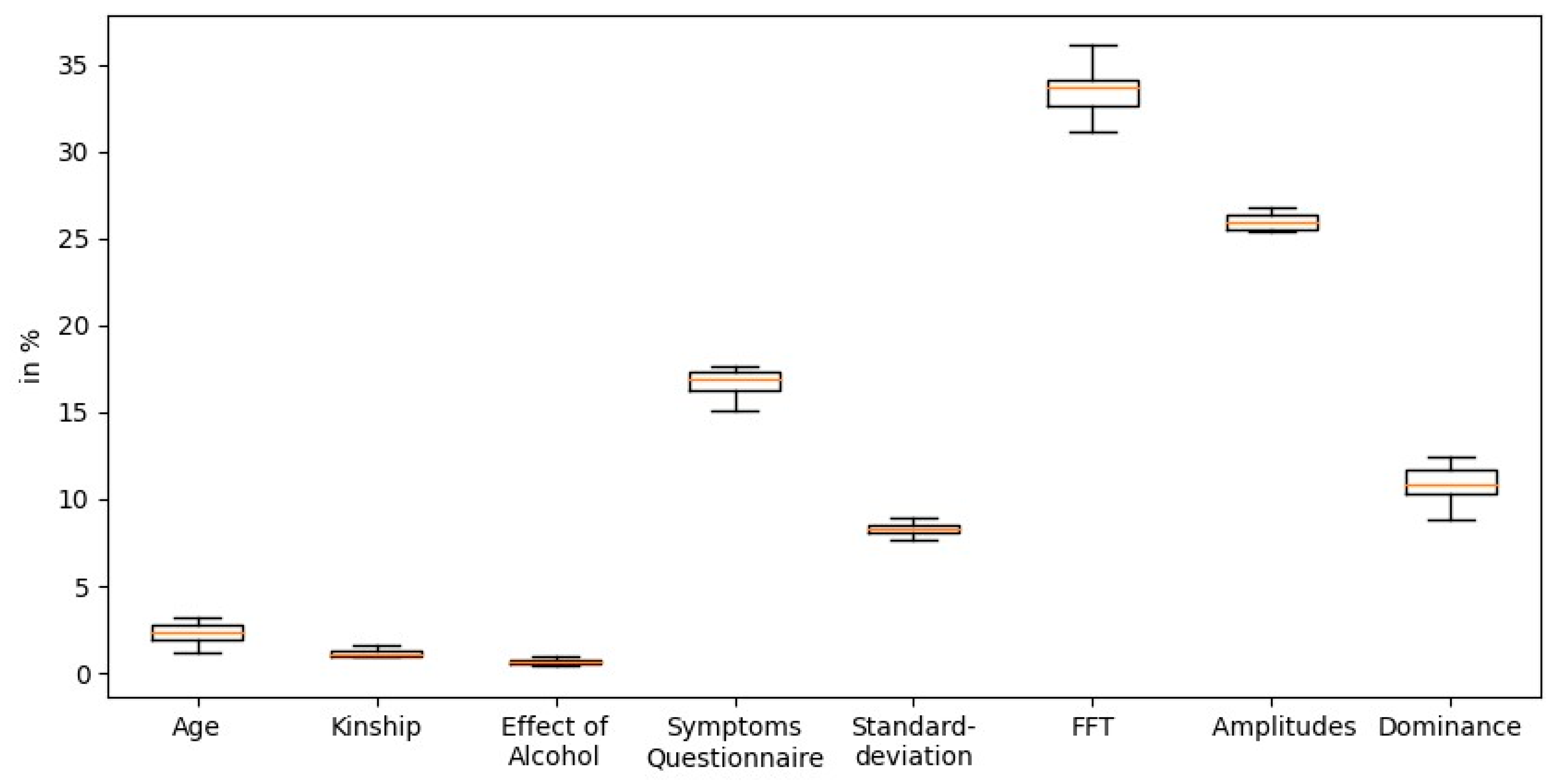
| Disease Class | Sample Size | Average Age (SD) |
|---|---|---|
| PD | 260 | 66.26 (9.61) |
| DD | 101 | 60.82 (12.87) |
| Healthy | 89 | 61.45 (10.63) |
| Step | Duration (s) | Description |
|---|---|---|
| 1a | 20 | Rest tremor. Participant is seated with his eyes closed in resting position, positioning standardized to Zhang et al. [21]. |
| 1b | 20 | Rest tremor while patient is calculating serial sevens. |
| 2 | 10 | Lift and extend arms according to Zhang et al. [21]. |
| 3 | 10 | Remain arms lifted. |
| 4 | 10 | Hold 1 kg weight in each hand for 5 s. Start with the right hand. Then, have the participant’s arm rested again as in 1a. |
| 5 | 10 | Finger pointing. Participant should point with their index finger to examiner’s lifted hand. Start with participant’s right index, then left, then repeat. |
| 6 | 10 | Drink from glass. Have the participant grasp an empty glass with their right hand as if they would drink from it. Then repeat with the left hand. |
| 7 | 10 | Cross and extend both arms. |
| 8 | 10 | Bring both index fingers to each other. |
| 9 | 10 | Let participant tap their nose with both index fingers. Start with the right, then with left index. Then extend the arms. |
| 10 | 20 | Entrainment. The examiner stomps on the ground, setting the pace. The participant starts stomping with their right foot according to the pace while leaving their arms extended. Repeat this with the left foot. |
| Feature | Description |
|---|---|
| Medical History Questionnaire | Age height, weight, family history of PD (kinship with PD), effect of alcohol on tremor. Further details provided in Varghese et al. [18]. Medication is captured but not used as a training-feature as it is too closely linked to the target classes. |
| Symptoms-Questionnaire | The number of items answered with ‘yes’ in the Parkinson’s disease Non-Motor Scale by the Movement Disorder Society [19]. |
| Amplitude Distribution | Apply Euclidean norm on all three acceleration axes to generate 1-dimensional time-series vector. Create an Amplitude histogram and pick the 30th to 70th percentile in 5 percent steps. Applied for all assessment steps. |
| Tremor Side Dominance | Use the 90th percentile of the left and right arm acceleration and calculate the ratio. Applied for all assessment steps. |
| Standard Deviation of Acceleration | Calculate the standard deviation of the acceleration data. Applied for all assessment steps. |
| Fast Fourier Transformation | Calculate the three-dimensional FFT for the assessment step and use polynomials of degree 3 to approximate the FFT. The three coefficients are used as features. Applied for all assessment steps. |
| Estimator | Accuracy | Balanced Accuracy | Precision | Recall | F1 |
|---|---|---|---|---|---|
| MLP | 0.864 (0.03) | 0.815 (0.05) | 0.907 (0.03) | 0.913 (0.03) | 0.909 (0.02) |
| SVM—rbf | 0.870 (0.02) | 0.827 (0.01) | 0.913 (0.01) | 0.913 (0.03) | 0.913 (0.01) |
| CatBoost | 0.887 (0.02) | 0.819 (0.04) | 0.901 (0.03) | 0.956 (0.03) | 0.927 (0.01) |
| Simple DNN | 0.768 (0.06) | 0.591 (0.07) | 0.782 (0.03) | 0.954 (0.06) | 0.859 (0.04) |
| Estimator | Accuracy | Balanced Accuracy | Precision | Recall | F1 |
|---|---|---|---|---|---|
| MLP | 0.856 (0.04) | 0.772 (0.05) | 0.907 (0.02) | 0.914 (0.03) | 0.910 (0.02) |
| SVM—rbf | 0.838 (0.02) | 0.750 (0.03) | 0.901 (0.02) | 0.897 (0.06) | 0.897 (0.02) |
| CatBoost | 0.882 (0.03) | 0.757 (0.06) | 0.895 (0.02) | 0.968 (0.03) | 0.929 (0.01) |
| Simple DNN | 0.791 (0.03) | 0.551 (0.06) | 0.814 (0.01) | 0.956 (0.03) | 0.879 (0.02) |
| Estimator | Accuracy | Balanced Accuracy | Precision | Recall | F1 |
|---|---|---|---|---|---|
| MLP | 0.823 (0.01) | 0.741 (0.03) | 0.865 (0.01) | 0.905 (0.00) | 0.885 (0.00) |
| SVM—rbf | 0.800 (0.02) | 0.682 (0.04) | 0.831 (0.02) | 0.921 (0.01) | 0.873 (0.01) |
| CatBoost | 0.817 (0.02) | 0.678 (0.03) | 0.826 (0.01) | 0.956 (0.03) | 0.887 (0.01) |
| Simple DNN | 0.735 (0.01) | 0.512 (0.01) | 0.751 (0.01) | 0.965 (0.04) | 0.844 (0.01) |
Publisher’s Note: MDPI stays neutral with regard to jurisdictional claims in published maps and institutional affiliations. |
© 2021 by the authors. Licensee MDPI, Basel, Switzerland. This article is an open access article distributed under the terms and conditions of the Creative Commons Attribution (CC BY) license (https://creativecommons.org/licenses/by/4.0/).
Share and Cite
Varghese, J.; Alen, C.M.v.; Fujarski, M.; Schlake, G.S.; Sucker, J.; Warnecke, T.; Thomas, C. Sensor Validation and Diagnostic Potential of Smartwatches in Movement Disorders. Sensors 2021, 21, 3139. https://doi.org/10.3390/s21093139
Varghese J, Alen CMv, Fujarski M, Schlake GS, Sucker J, Warnecke T, Thomas C. Sensor Validation and Diagnostic Potential of Smartwatches in Movement Disorders. Sensors. 2021; 21(9):3139. https://doi.org/10.3390/s21093139
Chicago/Turabian StyleVarghese, Julian, Catharina Marie van Alen, Michael Fujarski, Georg Stefan Schlake, Julitta Sucker, Tobias Warnecke, and Christine Thomas. 2021. "Sensor Validation and Diagnostic Potential of Smartwatches in Movement Disorders" Sensors 21, no. 9: 3139. https://doi.org/10.3390/s21093139
APA StyleVarghese, J., Alen, C. M. v., Fujarski, M., Schlake, G. S., Sucker, J., Warnecke, T., & Thomas, C. (2021). Sensor Validation and Diagnostic Potential of Smartwatches in Movement Disorders. Sensors, 21(9), 3139. https://doi.org/10.3390/s21093139







